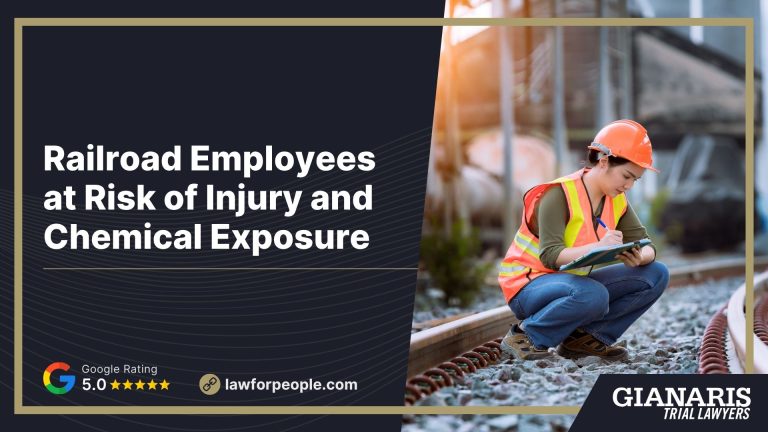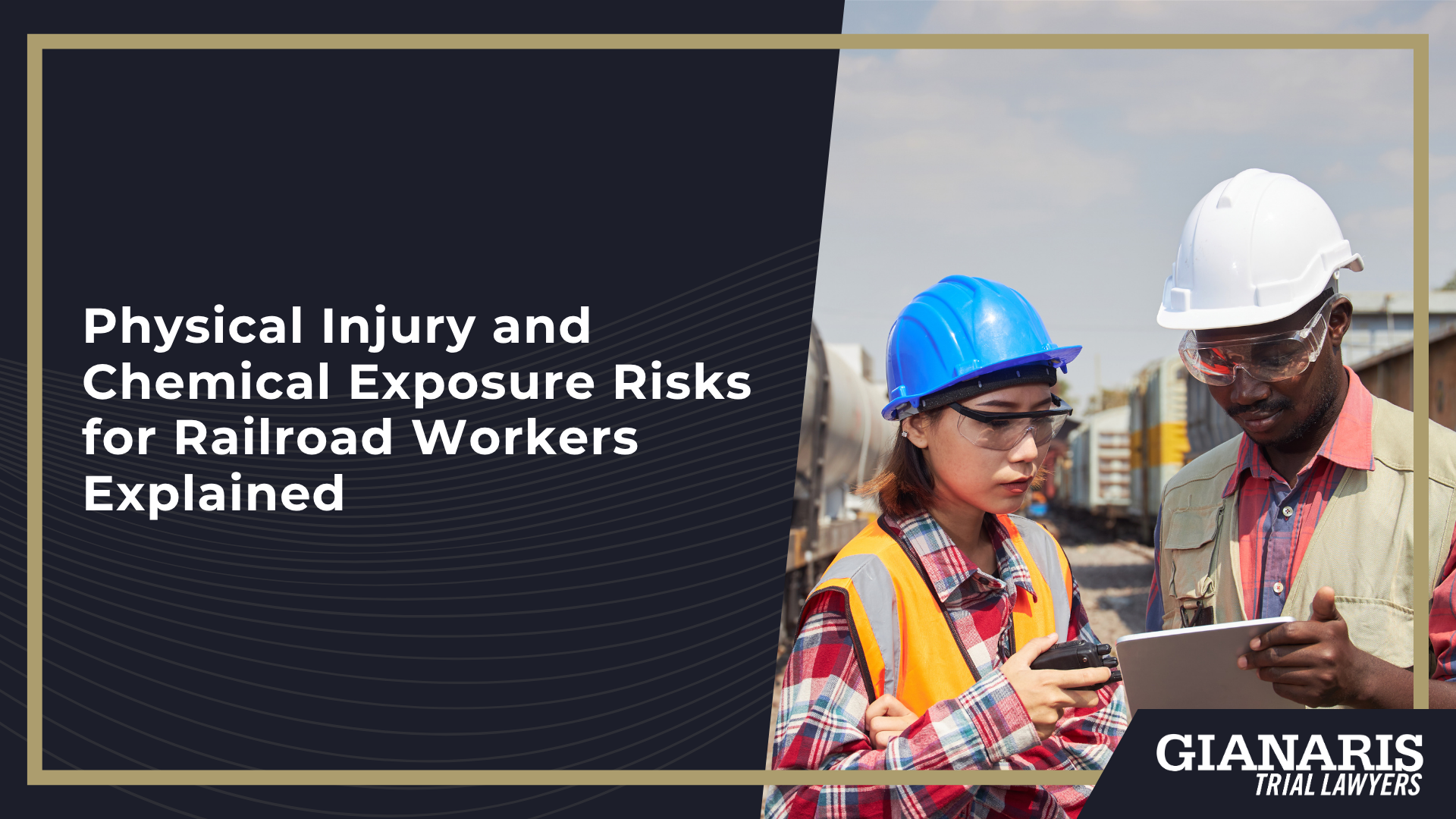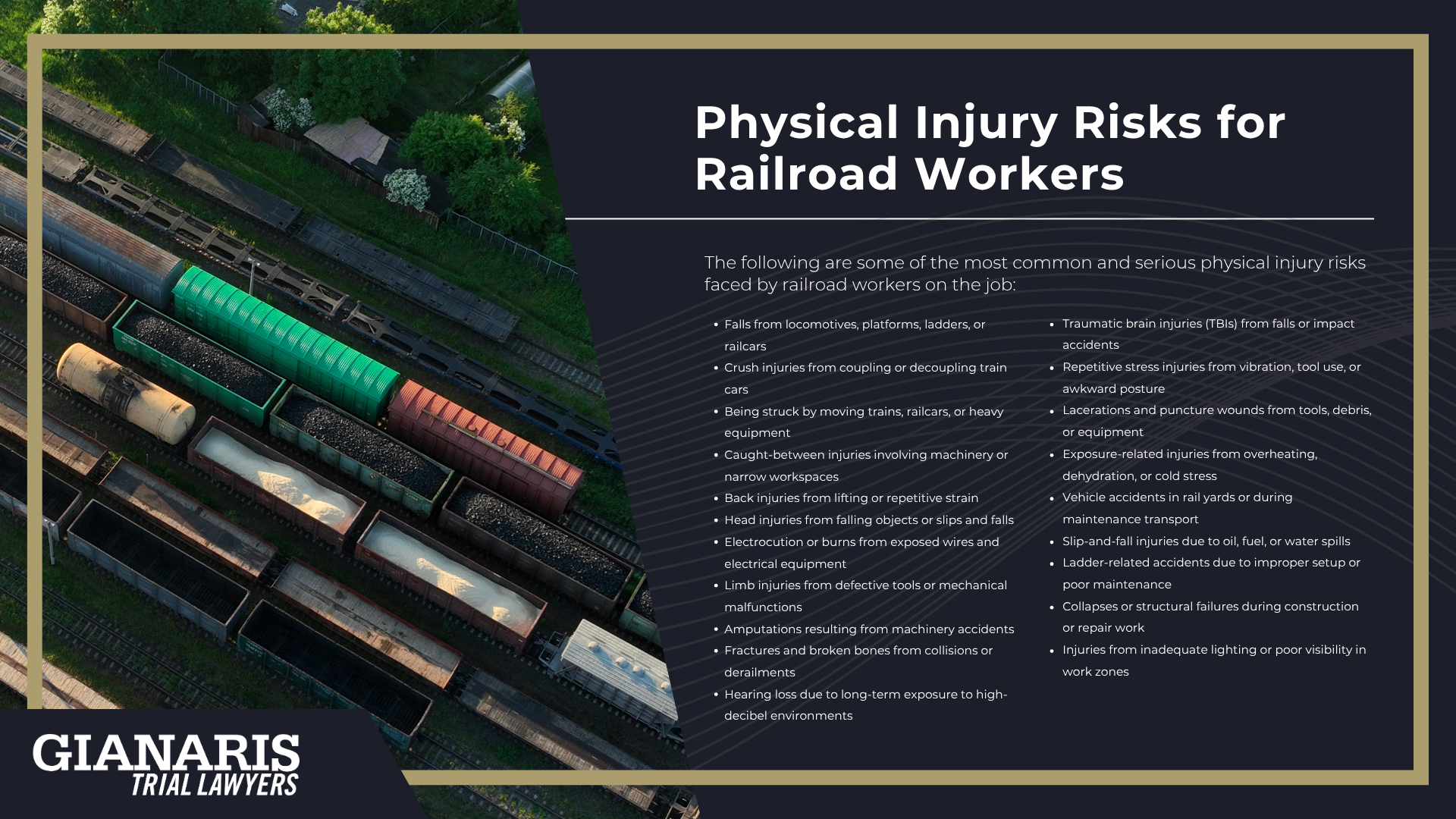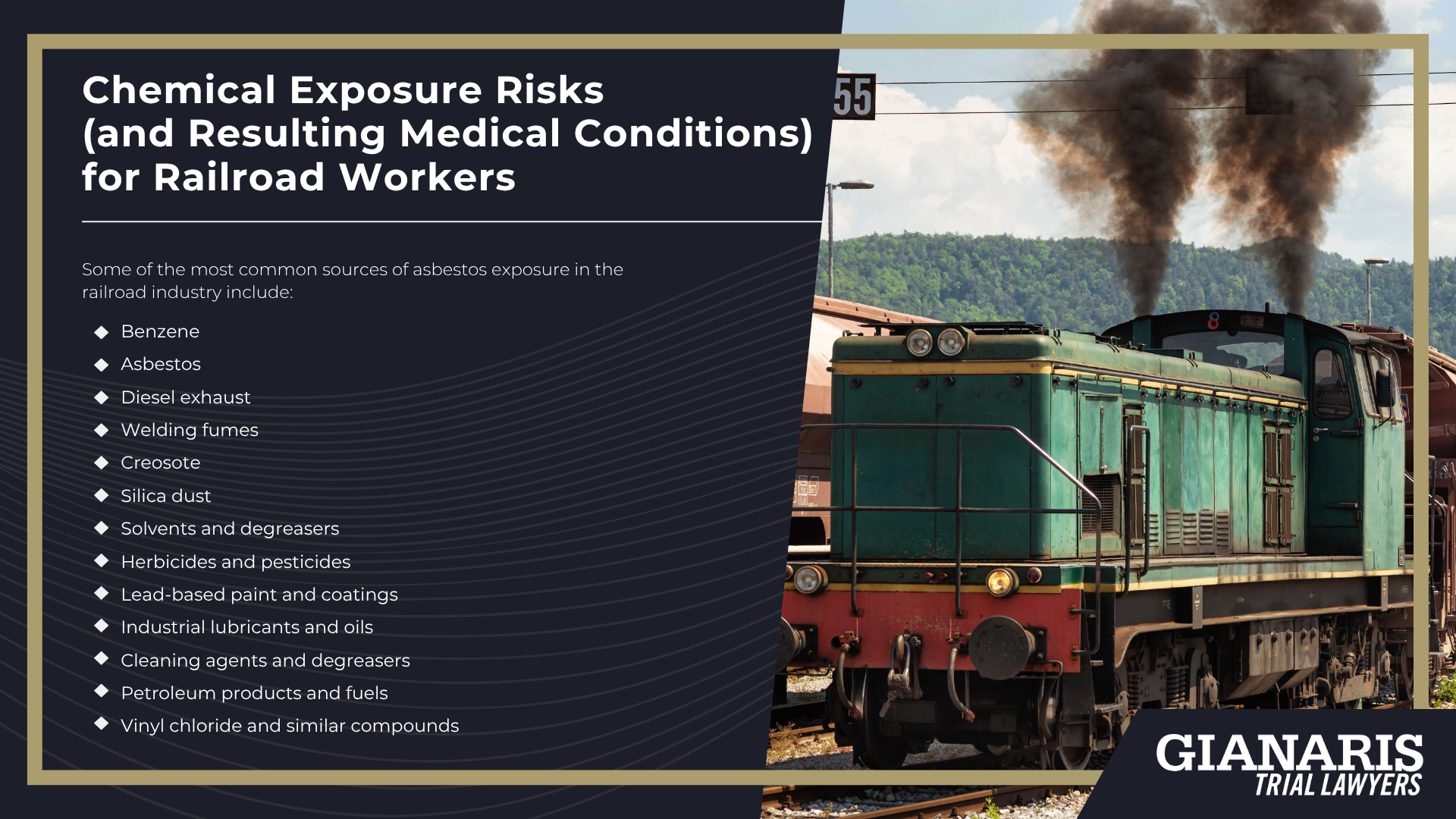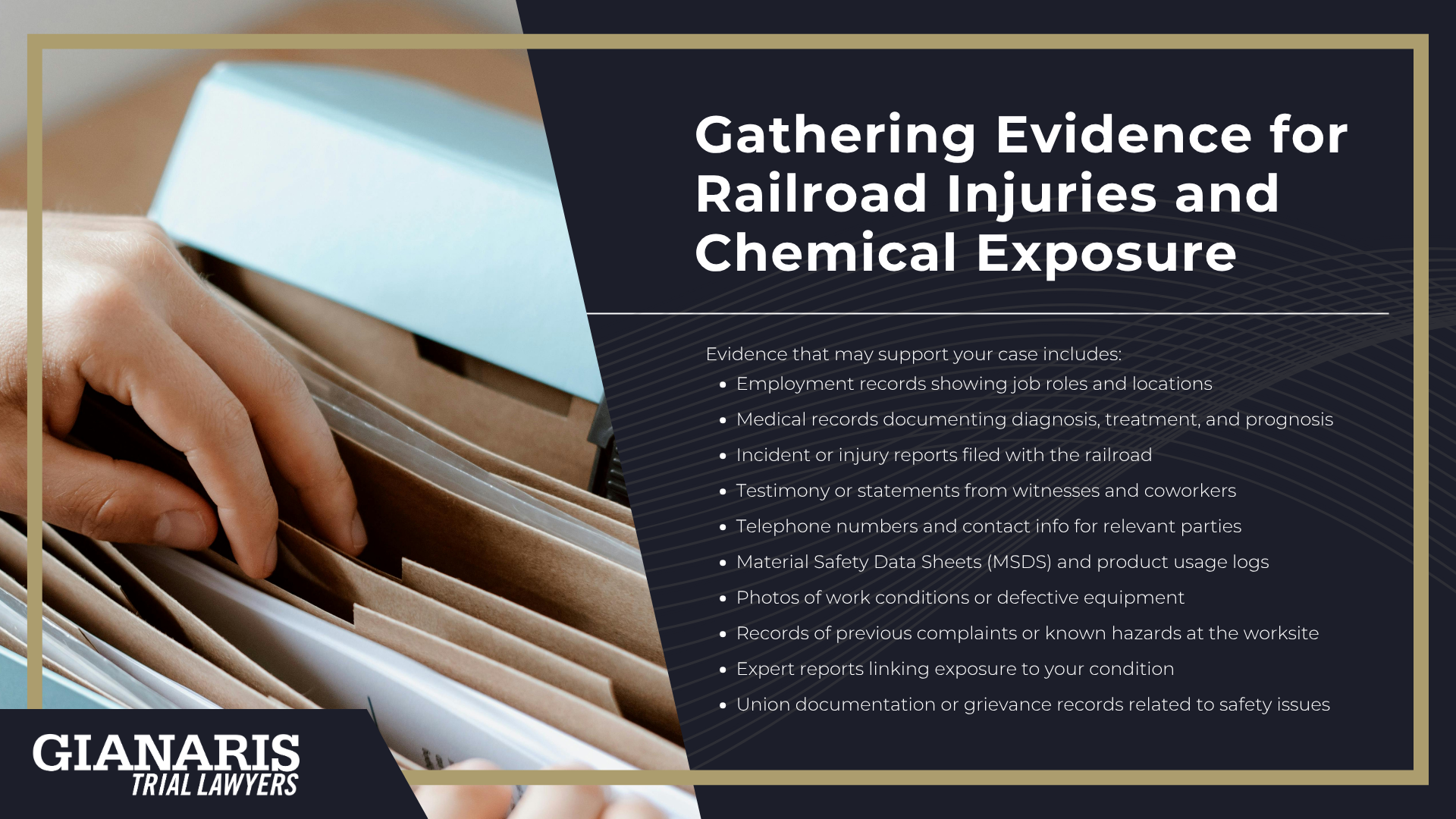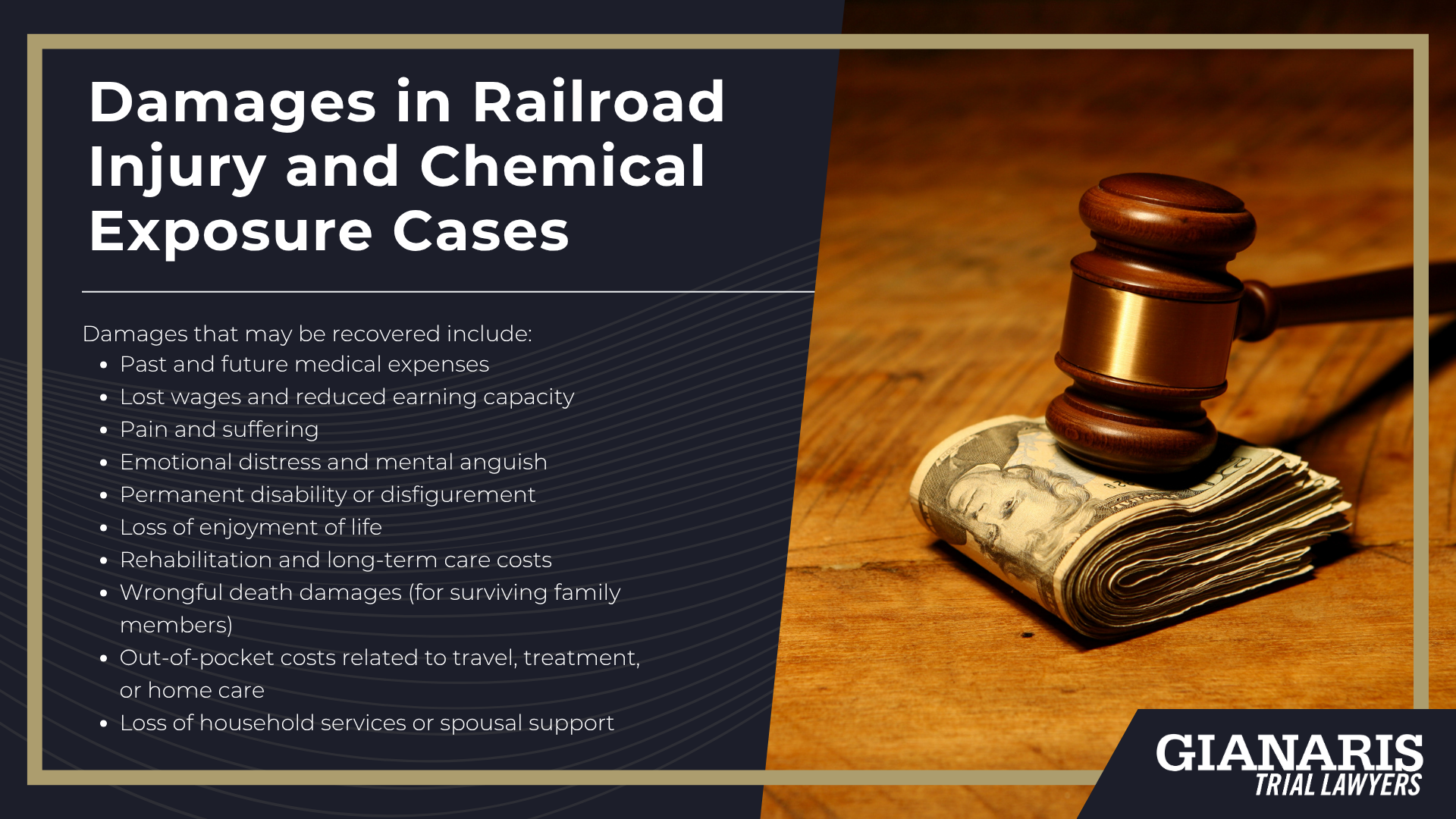Railroad work is physically demanding, often dangerous, and frequently conducted in high-risk environments involving moving equipment, heavy machinery, and hazardous chemicals.
According to the Federal Railroad Administration, thousands of injured workers each year suffer traumatic injuries, toxic exposure, or both.
Many of these workers go on to file FELA cases when a railroad employer violates a safety statute or fails to provide a safe work environment.
Exposure to chemicals (like diesel exhaust, solvents, and benzene), combined with the risk of falls, crush injuries, and broken bones has affected generations of workers across the rail industry.
Despite decades of evolving safety knowledge, some employers continue to neglect the basic responsibilities of employment, leaving workers with long-term health consequences and diminished ability to earn or live without pain.
In severe cases, workers have been killed on the job due to preventable hazards.
FELA not only provides a legal path to hold negligent companies accountable, but also helps workers and families recover the pay and support they’ve lost due to workplace injuries or illness.
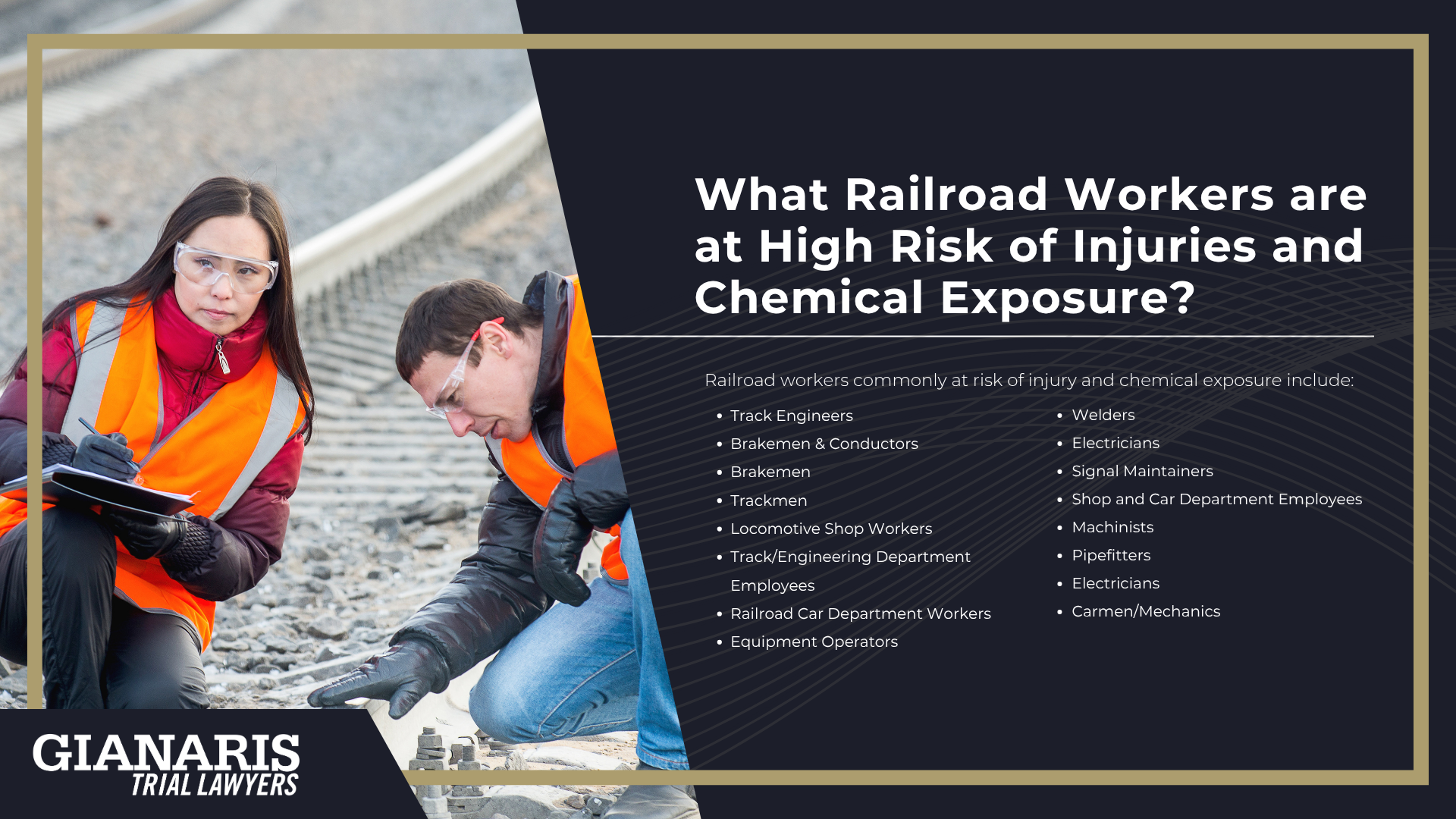
Railroad workers commonly at risk of injury and chemical exposure include:
- Track Engineers – exposed to track machinery, welding fumes, and potential crush injuries
- Brakemen & Conductors – frequent exposure to fuel fumes, moving trains, and unsafe coupling systems
- Brakemen – high-contact roles involving manual train connections and frequent risk of falls and trauma
- Trackmen – direct exposure to dust, vibration, loud noise, and diesel-powered tools
- Locomotive Shop Workers – constant contact with solvents, degreasers, and diesel exhaust
- Track/Engineering Department Employees – ongoing use of chemicals and machinery in confined or open environments
- Railroad Car Department Workers – often work with rust removers, paint, adhesives, and petroleum-based products
- Equipment Operators – exposed to moving machinery, airborne particulates, and physical strain
- Welders – risk of inhaling fumes, flash burns, and repetitive stress injuries
- Electricians – potential for electrical burns, shock, and solvent exposure in enclosed areas
- Signal Maintainers – frequently injured working near live tracks and exposed to extreme conditions
- Shop and Car Department Employees – exposed to various toxic chemicals and rotating equipment
- Machinists – risk of hand injuries, inhaling metal dust, and working around hazardous oils
- Pipefitters – work with pressurized systems and often in contact with chemical residues
- Electricians – often work in confined areas with high-voltage systems and exposure to chemical coatings
- Carmen/Mechanics – responsible for inspecting and repairing train cars, often using degreasers, paints, and fuels
These roles not only carry risks of physical harm, but many also involve prolonged, routine exposure to hazardous substances that may lead to life-altering health conditions over time.

